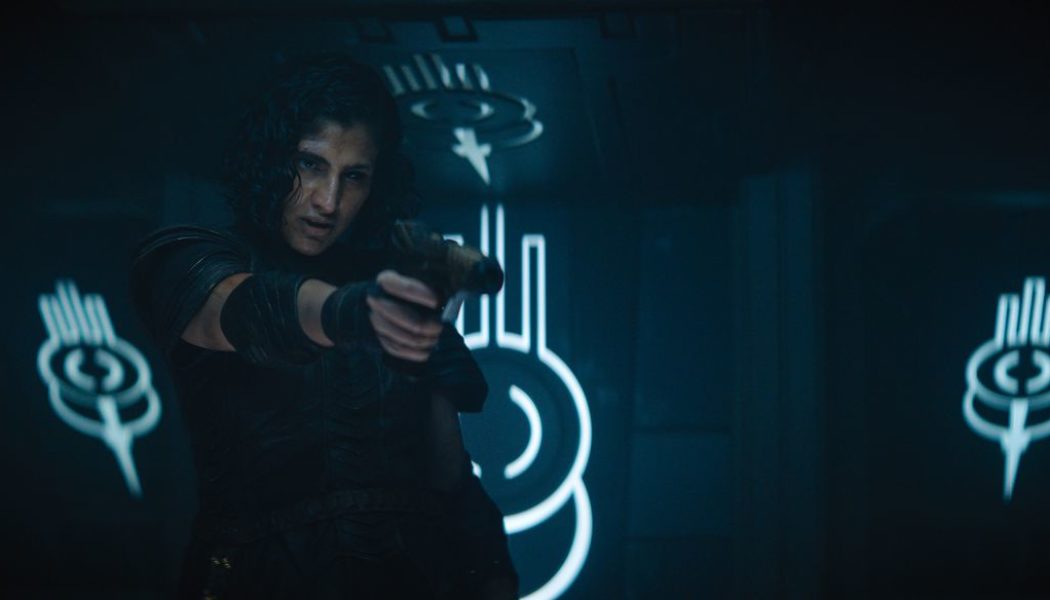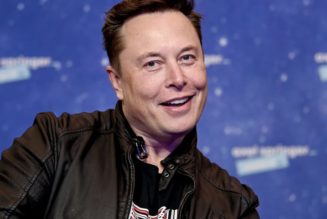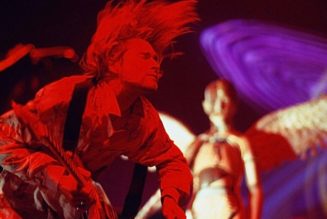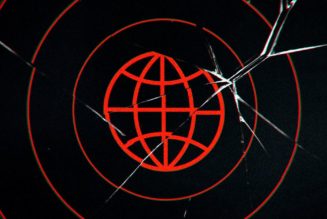Foundation’s first season has officially wrapped with its season finale, which saw the first chapter of Apple TV Plus’ most ambitious show come to a conclusion.
The epic sci-fi show, based on Isaac Asimov’s centuries-spanning series of novels, has grown far beyond its quasi-magic space math from the initial episodes, spinning out different storylines ranging from drama in the Foundation’s newfound home of Terminus to the byzantine imperial politics of Trantor.
In the wake of the finale, The Verge’s Chaim Gartenberg and Andrew Webster are revisiting the show to see what worked, what didn’t, and what they’re hoping to see in the already-announced second season.
Spoilers for the entire first season of Foundation ahead
:no_upscale()/cdn.vox-cdn.com/uploads/chorus_asset/file/23028213/Foundation_Photo_010904.jpg)
Chaim: I’m really of two minds about Foundation. With the first season in the bag, I’m actually really enjoying the show as interesting, high-concept sci-fi. But the story that’s being told here is emphatically not that of Foundation from the Asimov books.
I get that there’s bound to be differences in adapting a seven-book series (not counting the expanded Empire and Robot stories that Asimov later tied into a mostly cohesive whole) that was retroactively forged into books out of numerous short stories aiming to tell a story spanning 1,000 years of human history. But even with that said, after borrowing the basic premise — the Empire is going to fall and mankind will suffer 30,000 years of darkness unless something is done to cushion the dark age to 1,000 years, because “fancy math” — Foundation just seems wholly uninterested in exploring that concept past the first episode or two.
The individual stories here are generally interesting on their own. The “genetic dynasty” of a succession of Lee Paces ruling the crumbling empire with an iron fist is the show’s highlight, thanks in no small part to Pace’s dynamic performances as the cloned Brother Day. And Salvor Hardin’s cat-and-mouse game on Terminus with the Anacreons is enjoyable sci-fi fare, too.
Meanwhile, the third leg of the story, the prolonged drama of Gaal’s shuttling in cryo from place to place as the show hints at her mysterious powers, is… less compelling.
The practical concerns of running a multi-season TV series also clearly impact the show. Some characters, like the Cleon clones or the seemingly immortal robot Demerzel, play well into the themes of the series and help give weight to the sheer size and scale of the Empire. But by the end of the finale, it felt like the show was twisting itself in knots to keep key characters like Hardin and Gaal around through multiple eras of the show so that the actors playing them could offer some continuity for the next season.
:no_upscale()/cdn.vox-cdn.com/uploads/chorus_asset/file/23028228/Foundation_Photo_010605.jpg)
Andrew: I’m not as well-versed on the source material, but I generally agree. Once all of the initial worldbuilding and discussion of future-predicting math was out of the way in the first few episodes, Foundation really picked up in a lot of ways. The worldbuilding remains incredible throughout. All of the many cultures and planets have a depth to them that is quite frankly astounding. That goes for the big things — like a desert planet’s incredibly detailed religious beliefs and ceremonies or the sheer scale of the landscapes you see — to the smaller moments, like the scratches on an old spacesuit or the way each culture has its own particular style of dress and armor. You can tell there was a huge budget here, and it was put to good use. (Even the special effects that seem out of place, like a certain robot skull in the finale, look amazing.)
Early on, I really struggled to identify with any of the cast. It was all setup and vanishingly little character development. As the story developed, Foundation’s confusing structure continued to make this a struggle. It jumps around a lot, both in terms of the stories it’s focused on and the timeline. There’s just so much going on, and so much complexity — Harri Seldon’s plan seemed complicated at first, but the many layers (and lies) it ends up involving made it even harder to follow — that’s only compounded by the fact that many of the characters live years beyond their life span through cryo-sleep or other means. Oh, and then there are the multiple generations of the emperor, all played by the same three actors, making things even harder to follow. It also doesn’t help that the show is far too serious all the time. I get that the fate of the universe is important, but Foundation could definitely use a sense of humor to lighten the mood at times and let me connect to its cast.
It wasn’t until episode eight, where Lee Pace’s emperor faces a life-threatening trek through a desert, where I felt like I was finally getting to know these characters. Up until then, the show seemed more focused on the universe as a whole than it did the individual people whose stories it’s telling. Once it slowed down, though, and allowed viewers longer and quieter moments with the cast, it really worked. And like you said, even when they don’t have much to work with, much of the cast here does great with what’s in front of them — especially the villains. Pace exudes a cold calculating menace that borders on sociopathic, while Kubbra Sait, as the grand huntress of the planet of Anacreon, is terrifyingly focused on vengeance above all else. Another highlight is T’Nia Miller as a devout religious leader who stands tall against the empire.
:no_upscale()/cdn.vox-cdn.com/uploads/chorus_asset/file/23028233/Foundation_Photo_010802.jpg)
Chaim: I’ll join you in praising the worldbuilding: Foundation always looks incredible, from claustrophobic hallways on a derelict ship to the sweeping salt deserts to the stark stone of Terminus.
And the slower pace and steadily built-out cast do help flesh out the latter characters a lot more than Gaal, Hari, or Raych get throughout the first two episodes. Salvor’s extended screentime means that we get to know her, the often contentious relationship she has with her parents and the Foundation’s leadership, and her romantic fling with the Han Solo-esque Hugu (Daniel MacPherson, who helps add a much-needed lightness of tone whenever he shows up).
The show also uses the time to raise some thoughts about the idea of religion and faith versus science and human effort, and the blurred lines between them, particularly as Seldin’s elaborate plan is revealed to help establish himself as a mythological figure in the history of the Foundation. It’s these sorts of parallels that Foundation doesn’t quite fully dig into, although hopefully the show will continue to explore those areas in season 2.
But Foundation’s pace and added filler also has me raising some eyebrows at the show’s future. One of the draws of the original series is how it skips through time, showing snapshots of the fall of the Empire, the rise of the Foundation as a new power, how Seldon’s predictive powers do (and occasionally don’t) manage to foresee the different shifts and changes in the galactic sphere. And on that scale, Foundation still feels like it’s stuck in the earliest stages of what it could be.
:no_upscale()/cdn.vox-cdn.com/uploads/chorus_asset/file/23028249/Foundation_Photo_011004.jpg)
In theory, that could all be part of the plan: showrunner David S. Goyer apparently pitched Apple on eight seasons of the series for a total of 80 episodes, which would justify the occasionally dragged-out pace if (and it’s a big if) Foundation actually gets the time and budget to tell the other 87.5 percent of its story.
And if Foundation is going to try to forge forward in telling the story of Seldon’s 1,000-year plan, at some point it is going to have to leave some of its cast and characters behind to forge ahead in the future.
Andrew: Yeah, and here’s the thing: Foundation really does feel like it’s building toward something interesting. But in these 10 episodes, it hasn’t reached that destination yet. It’s more like an extended prologue than its own story. Much like Hari Seldon’s followers, the show demands a lot of faith from viewers. In season 1, you’re investing 10 hours for the promise of a more interesting story to come.









